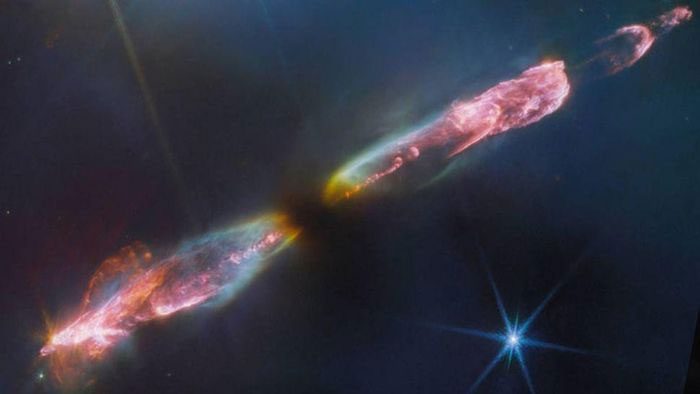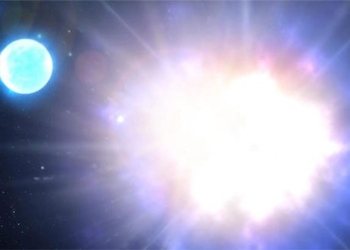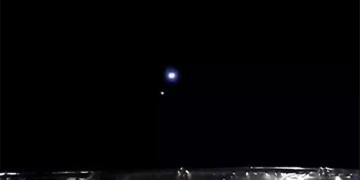The James Webb Space Telescope has captured a stunning new image of a sun-like protostar ejecting gas and dust, creating breathtaking shockwaves when viewed in infrared.
The James Webb Space Telescope (JWST) has observed a small sun-like star ejecting streams of supersonic gas and dust into space, resulting in visually astonishing shockwaves that researchers say “look like beams of light swords.”

The protostar HH 211 is developing like the Sun, emitting a pair of glowing gas and dust jets that form powerful shockwaves as they collide with the surrounding gas of the small star. (Image: ESA/Webb, NASA, CSA, T. Ray, Dublin Institute for Advanced Studies).
The newly formed star, or protostar, is not directly visible in the latest JWST image. However, scientists know it is located in the dark region between two glowing streams of gas and dust, known as bipolar jets, emanating from the developing star named Herbig-Haro 211 (HH 211). Herbig-Haro objects are regions of nebulosity illuminated by a newly formed star.
HH 211 is approximately 1,000 light-years away from Earth in the constellation Perseus and was discovered in 1994. Based on the size of the jets, the protostar may be only a few thousand years old and weighs about 8% of the Sun, according to NASA. However, this small star is expected to grow to a size comparable to the Sun in the coming millions of years. This suggests that our star may have once looked very similar to HH 211.
The lead author of the study, Tom Ray, an astrophysicist at the Dublin Institute for Advanced Studies in Ireland, stated that the streams of material can “shine with light from many different atoms and molecules” and get excited when they collide with surrounding gas clouds. He added that JWST’s near-infrared camera makes it much easier to distinguish between the components.
The infrared images show that these jets are primarily composed of molecules—two or more atoms connected by chemical bonds—such as carbon monoxide, silicon monoxide, and molecular hydrogen.
This surprised researchers, as they expected that, like other bipolar jets, HH 211 would primarily be composed of individual atoms or ions.
They believe that these jets are transmitting molecules rather than atoms and ions, as the material is flowing relatively slowly. Higher speeds could break the molecules into individual atoms and ions. Ray noted that it remains a mystery why the jets of HH 211 are slower than other bipolar jets.
The level of detail captured by JWST is unprecedented. NASA notes that the new image has a resolution that is 5 to 10 times higher than any other images of HH 211. This is another example of how JWST can unlock secrets about the structure of the universe that have been meticulously studied.





















































